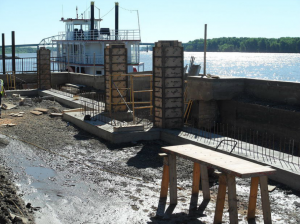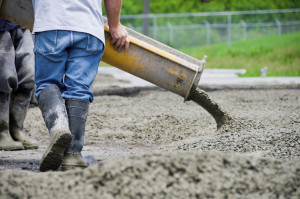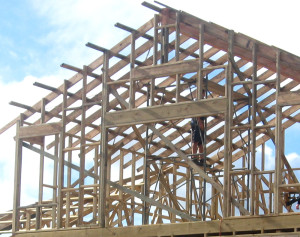CONSTRUCTION SPENDING LEVEL EDGES HIGHER
This press release comes from the Associated General Contractors website http://www.agc.org
Press Release 
CONSTRUCTION SPENDING LEVEL EDGES HIGHER IN APRIL AS SOARING RESIDENTIAL OUTLAYS AND MIXED PRIVATE NONRESIDENTIAL ACTIVITY OFFSET PUBLIC DECLINE
Date: June 3, 2013
Officials Call for Reinvigorating Construction Training in Schools, Rejecting Arbitrary Caps on Construction Workers in Immigration Legislation as Spending Trends Contribute to Localized Worker Shortages
Total construction spending registered a small gain in April but showed very mixed patterns among major segments, according to an analysis of new Census Bureau data by the Associated General Contractors of America. Association officials cautioned that a surge in certain project types and regions could leave the industry short of workers even while overall unemployment remains high.
“The report underscores patterns that have prevailed for several months: surging home and apartment construction, volatile private nonresidential activity and shrinking public investment,” said Ken Simonson, the association’s chief economist.”This uneven result is leading to selected materials cost increases and localized reports of worker shortages despite continuing hard times for many contractors and workers.”
Construction put in place totaled $861 billion in April, rising 0.4 percent since March and up 4.3 percent since April 2012. Private residential construction spending inched down 0.1 percent in April but jumped 19 percent from a year earlier. Private nonresidential spending climbed 2.2 percent for the month and 0.6 percent year-over-year. Public construction spending dropped 1.2 percent for the month and 5.1 percent over 12 months.
“New apartment and home construction were standouts again and should remain very strong for the rest of 2013,” Simonson said. “Growth has been more inconsistent among private nonresidential categories, reflecting reluctance of businesses to commit to investing in structures amid ongoing economic uncertainty. Meanwhile, there appears little prospect that public agencies will start investing in infrastructure any time soon.”
Over the past 12 months, the biggest jump in construction spending has occurred in new multifamily construction, which soared 3.4 percent for the month and 49 percent year-over-year. New single-family construction rose 1.4 percent and 39 percent, respectively. But overall residential gains were held down by a decline in improvements to existing structures of 3.3 percent for the month and 7.0 percent from April 2012.
The largest private nonresidential category, power construction—which includes oil and gas field and pipeline projects as well as power plants, renewable power and transmission lines—leaped 10.8 percent in April following a steep downward revision in the March estimate. Despite the one-month surge, power construction spending was down 2.8 percent since April 2012. The second-largest private segment, manufacturing construction, slumped 2.6 percent for the month but added 2.2 percent over 12 months.
Highway and street construction, the largest public category, increased 0.5 percent in April but slipped 3.4 percent from a year earlier, Simonson noted. The next largest public niche, educational construction, tumbled 4.4 percent and 13 percent, respectively, he added.
Association officials said the latest construction spending figures highlight the need to reinvigorate skills-based training programs in public schools and reject arbitrary caps on construction workers in proposed immigration legislation. “We need to make sure we have prepared workers in place to handle growing demand for construction,” said Stephen E. Sandherr, the association’s chief executive officer.
http://www.agc.org/cs/news_media/press_room/press_release?pressrelease.id=1349



